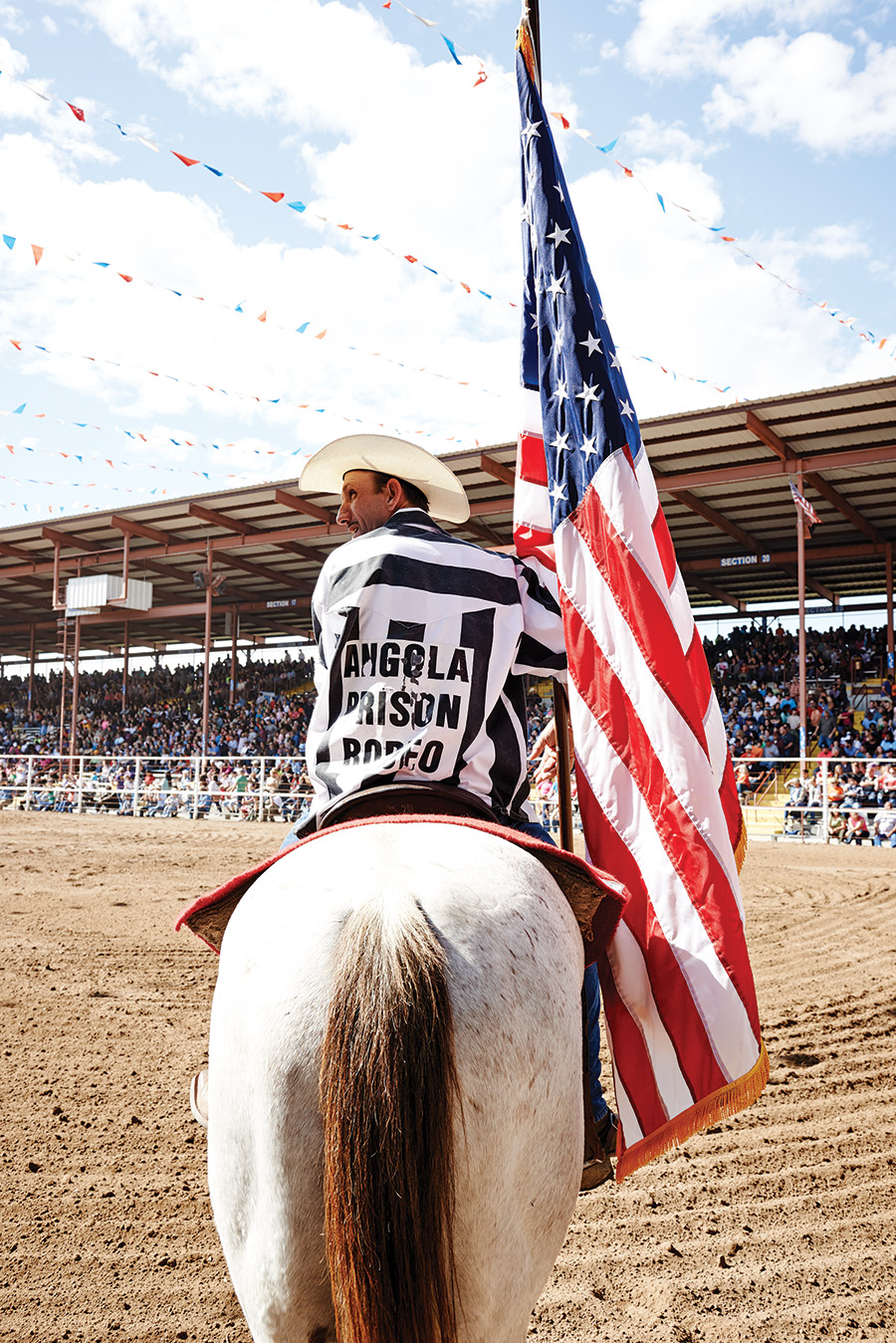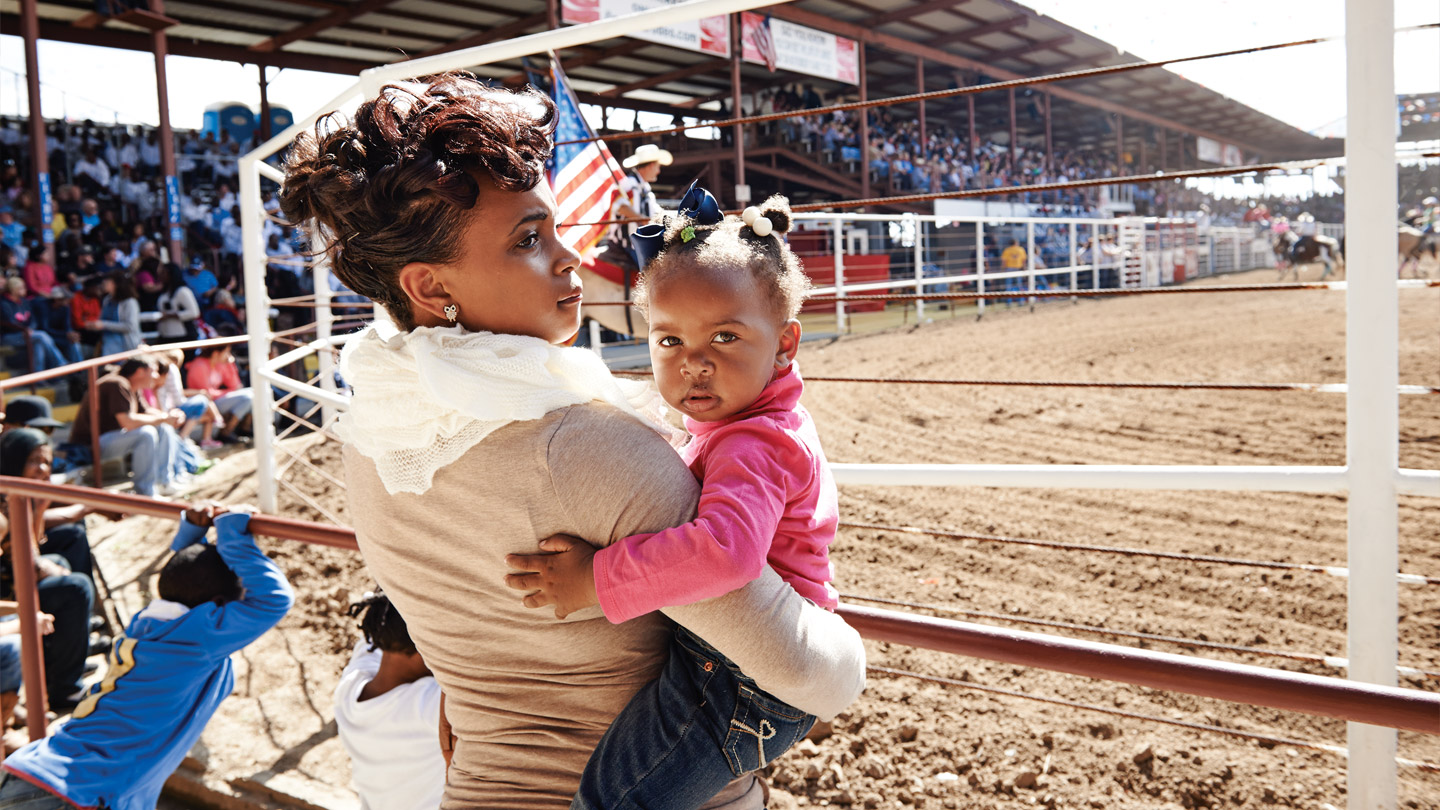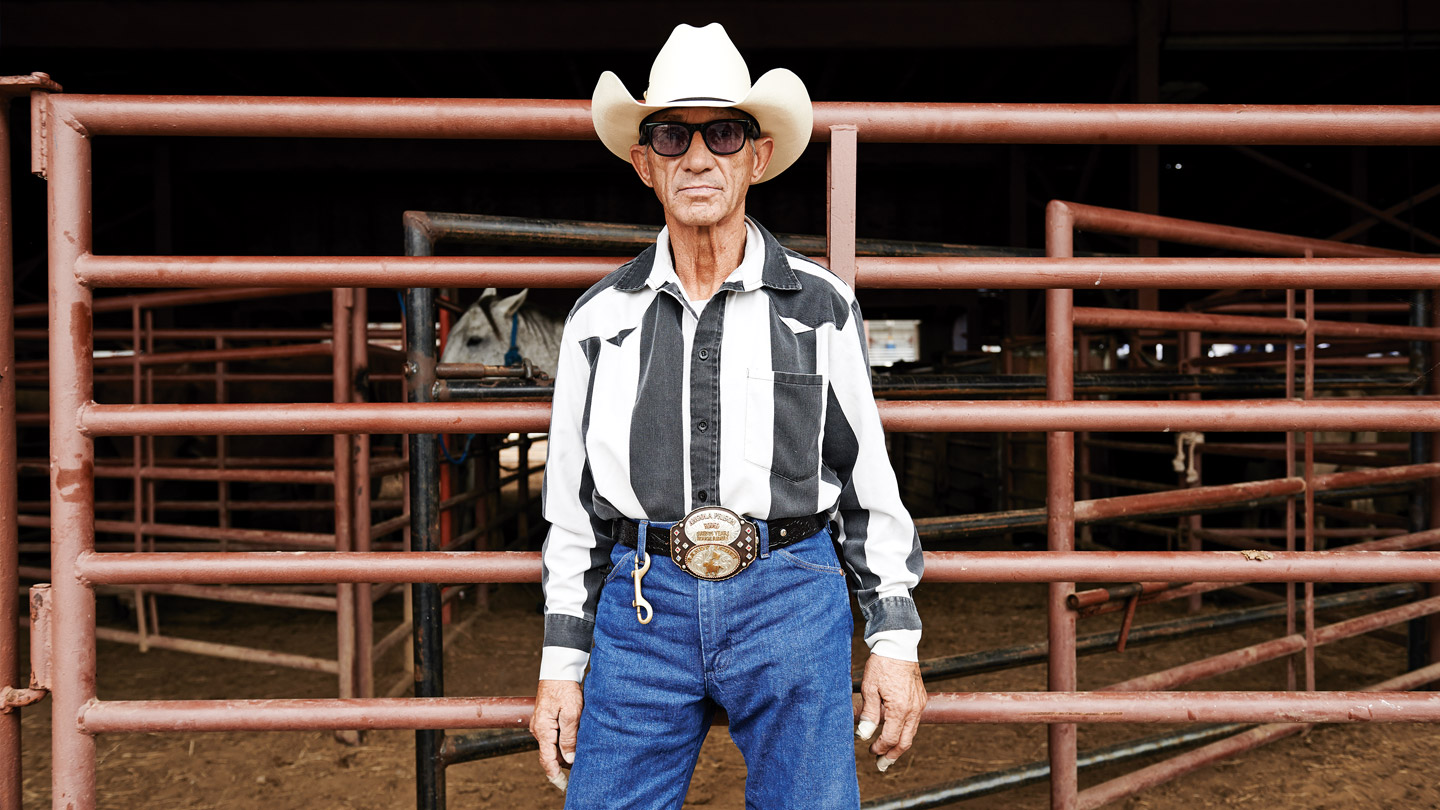A skilled horseman, Tank is a member of the prison’s mounted drill team, the Angola Rough Riders, but doesn’t compete in any of the rodeo’s riding events in an effort to stay healthy for Guts and Glory. He moves continuously as he speaks, a measured two-step sway, and holds a T-shirt draped over the back of his neck with both hands, causing the muscles of his upper arms and chest to pop. He gives off a crackle of potential energy, not nervousness, but something ready and a bit impatient. “I just like messin’ with the animals, the thrill of it,” he says. “Knowin’ that [the bull is] aggressive, so I gotta be more aggressive than he is. I gotta be the dominant one. That’s how I look at it.”
While other competitors tend to wait for the bull to run itself down a bit and tire, Tank goes after the chip right out of the chute, willing to take a big hit early on. “I try not to take the contact if I don’t have to, but if I’m sure I can get that money, I don’t have no problem with him hittin’ me,” he says. “I’ve been knocked out twice dead, but I’ll shake it off and go back at him again. My motto is: If he don’t break nothing, he don’t stop me.”
Already in possession of the Guts and Glory record for fastest time, at 19 seconds, Tank plans to do more than just top Angola’s all-time win total. “They’re gonna have to work to get mine,” he says with a laugh. “Whenever I do try to set it down, I’m gonna make sure it’s up in the 20s.” Still, Guts and Glory holds a significance for him beyond the bragging rights it provides. “I’ve been locked up goin’ on 16 years, never sent home for money,” he says. “I send home to take care of my kids with the money I make. I don’t want for nothing but my freedom. I don’t want to put a burden on my people, I was always brought up independent. That’s why I do what I do.”














